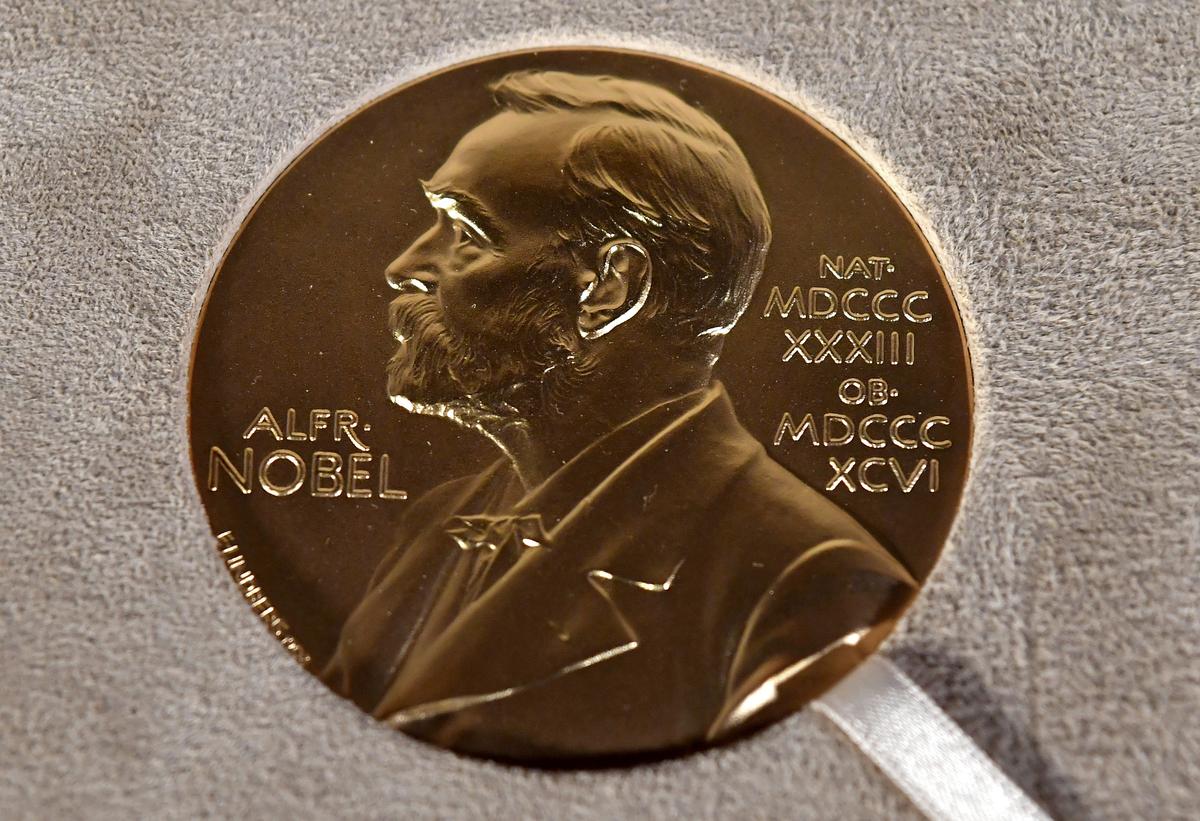2023 Nobel Prize in Chemistry awarded to Moungi G. Bawendi, Louis E. Brus and Alexei I. Ekimov


Illustrations of the 2023 Nobel Prize in Chemistry winners Moungi G. Bawendi, Louis E. Brus and Alexei I. Ekimov
| Photo Credit: X/@NobelPrize
The 2023 Nobel Prize in Chemistry has been awarded to Moungi G. Bawendi, Louis E. Brus and Alexei I. Ekimov for the discovery and synthesis of quantum dots, the Royal Swedish Academy of Sciences said in Stockholm.
Quantum dots have unique properties and now spread their light from television screens and LED lamps. They catalyse chemical reactions and their clear light can illuminate tumour tissue for a surgeon, the Academy said in a press release.
Researchers have primarily utilised quantum dots to create coloured light. They believe that in the future quantum dots can contribute to flexible electronics, miniscule sensors, slimmer solar cells and perhaps encrypted quantum communication.
Today quantum dots are an important part of nanotechnology’s toolbox. The 2023 NobelPrize laureates in chemistry have all been pioneers in the exploration of the nanoworld, said the Academy.
In the early 1980s, this year’s chemistry laureates Louis Brus and Alexei Ekimov succeeded in creating — independently of each other — quantum dots, which are nanoparticles so tiny that quantum effects determine their characteristics.

Image of the Nobel Prize medal for representation
| Photo Credit:
AP
In 1993, chemistry laureate Moungi Bawendi revolutionised the methods for manufacturing quantum dots, making their quality extremely high — a vital prerequisite for their use in today’s nanotechnology.
“Quantum dots are thus bringing the greatest benefit to humankind. Researchers believe that in the future they could contribute to flexible electronics, tiny sensors, thinner solar cells and encrypted quantum communication – so we have just started exploring the potential of these tiny particles,” the release added.
Last year the prestigious Prize was cinched by Carolyn R. Bertozzi, Morten Meldal and K. Barry Sharpless for the development of click chemistry and bioorthogonal chemistry. Their work in click chemistry has been used to develop pharmaceuticals, mapping DNA while bioorthogonal chemistry refined the pharmaceuticals used to treat cancer.
On October 3, the Royal Swedish Academy of Sciences announced the winners of this year’s Nobel Prize in Physics which was shared by Pierre Agostini, Ferenc Krausz and Anne L’Huillier for “experimental methods that generate attosecond pulses of light for the study of electro dynamics in matter.”
The Nobel Prize for Medicine or Physiology was granted to Katalin Karikó and Drew Weissman for their “discoveries concerning nucleoside base modification that enabled the development of effective mRNA vaccines against COVID-19.”
The recipients of the Nobel Prize in Literature will be announced on October 5 followed by the Prize for Peace on October 6 while the Prize for Economic Sciences will be released on October 9.
The prizes carry a cash award of 10 million Swedish kronor (nearly $900,000) and will be awarded on December 10. The money comes from a bequest left by the prize’s creator, Swedish inventor Alfred Nobel, who died in 1895.

